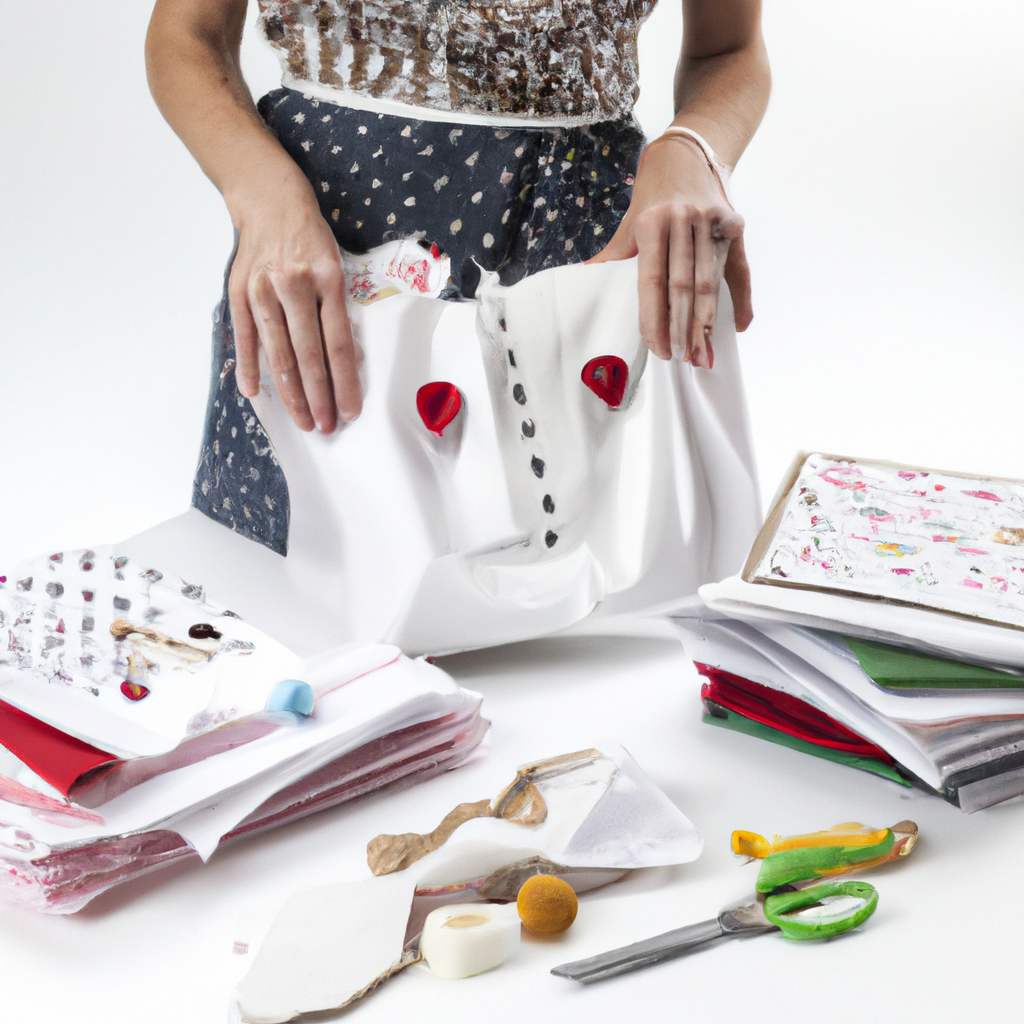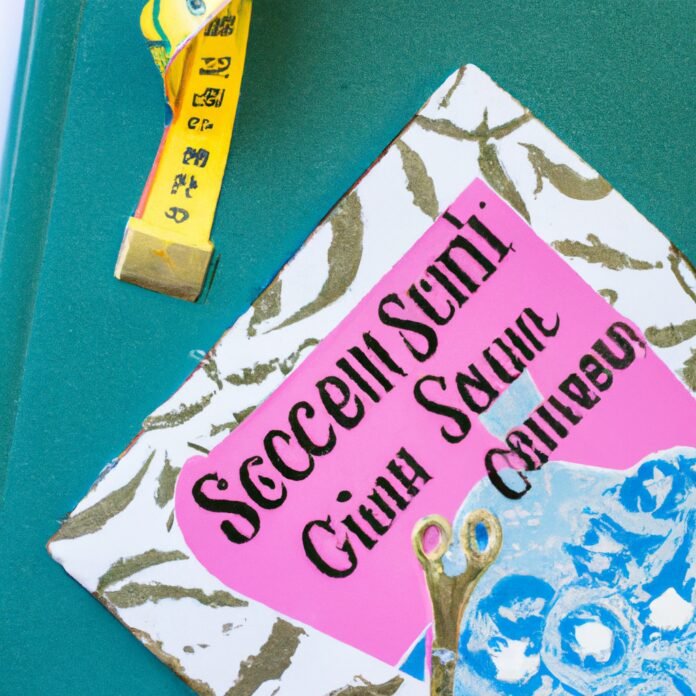As the maker movement continues to rise and the idea of DIY becomes ever-more popular, North American sewers are taking their craft to new levels. With the ability to create unique designs that give them and the products they produce a distinctive look, sewers have an opportunity to turn their sewing passion into a success story. Get ready to read all about the DIY couture tips to help you break into the fashion scene and sew your way to success!
1. Crafting Your Own Couture: Tips to Jumpstart Your Journey
Have you ever wanted to craft your own couture, but didn’t know where to begin? You’re in luck, because we’re here to share some tips! Whether you are a beginner, or just want to reacquaint yourself with the materials, this list is just what you’re looking for. Let’s get started:
Choose the right fabric and trims
When it comes to crafting your own couture, selecting the correct fabric and trims is key. Take the time to browse through swatch decks, paying attention to the fabric weave, weight, and drape. If you are making a special item, it is important to use the right fabric to get the desired effect. Once you’ve decided on the fabric, move on to the trims. Be mindful when selecting trims as they will have an effect on the overall look of the piece. Lace, embroidery, ribbons, and other items are available to enhance the garment.
Identify a pattern
Now that you have chosen your fabric and trims, it’s time to start selecting the accessories. First off, decide which pattern works best for the object you are creating. If you can’t find the pattern you desire, look into sketching your own. As you design, remember to take into account the fabric and trims you’ve chosen to make sure you are staying on track.
Assemble the pieces
With the fabric and trims ready, along with the pattern, start assembling the pieces. Sewing the components together will take time and patience, but it will be worth it in the end! The trick is to lay out and cut your fabric and trims carefully in order to preserve quality. If you’re still having trouble, we recommend consulting a professional tailor or seamstress for advice.
Complete the finishing touches
Once you have the main pieces together, it’s time to move on to the finishing touches. You can embellish further with beading, ribbon ties, hooks, and buttons. Make sure that each step is executed properly so the precision of handmade couture is maintained.
Test and reflect
This is perhaps the most important step: take the time to test and reflect on your creative work. How does the item fit? Is the stitching uniform? Are all the details on point? After testing, you may find yourself tweaking the pattern or fabric choices you’ve made. This is a natural and important part of the process. Never be afraid to go back and tweak!
You know have a wealth of knowledge to jumpstart you on your journey into making couture pieces. Now that you’ve equipped yourself with supplies and know-how, go ahead and try it out. Crafting your own couture should be an enjoyable and satisfying experience; have fun with it!

2. A Tailor-Made Approach to DIY Fashion Making
Fashion making, traditionally the domain of skilled professionals, is now being embraced by a new generation of DIY enthusiasts. By tailoring the traditional techniques of making clothing, it is possible to create unique and personal looks that are customized to your individual style. With the right tools and materials, it is easy to create a fashion-forward look that stands out from the crowd.
To get started on your DIY fashion project, select a pattern that appeals to your style. With a tailor-made approach to fashion, the possibilities are endless – from the classic A-line to the trendy jumpsuit. Consider the fabric you will use and ensure it is of the right quality for your desired look. High impact fabrics such as silks, satins, and chiffons often require special handling.
Once you have chosen your materials and pattern, it’s time to start cutting and sewing. With your tailor-made approach, you can design custom features to stand out from the crowd – choose the length of your dress or create patterns on jackets.
No tailor-made approach would be complete without a few special touches. Embroidery, appliqués, and beading can turn a plain garment into something unique and eye-catching. Basic accessories such as shoes, hats, and scarves can help you complete the look you are aiming for – the possibilities are only limited by your imagination and creativity!
Finally, tailoring your clothing can also help you save money. If you have created an item that you love but can’t find in a shop, you can always make it yourself.
- Choose a pattern that appeals to your style
- Select the right materials and fabric
- Start cutting and sewing according to the pattern
- Consider custom features for a unique look
- Include special touches with embroidery, appliqués, and beading
- Complete the look with accessories
- Save money by making it yourself
3. Putting the Pieces Together for Lasting Sewing Success
The Sewing Puzzle
To become a sewing expert, you must learn how to put together the various components of the craft – like putting together a puzzle! To lay the groundwork, it’s good to learn the basics of sewing first. Get to know the different kinds of sewing materials, machines, and concepts. Learn the basics of cutting, pressing, and stitching. Start with simple projects, such as garments or bags, before attempting more tailored ones.
Gathering the Necessary Sewing Knowledge
Once you’ve got the basics down, you can begin gathering knowledge on more specialized procedures and techniques. Different projects require different processes, so make sure to research specific steps for each item you make. This will help you build confidence and precision when doing the more complicated steps. It will also prevent mistakes that need corrections and costly fabric waste.
Practical Sewing Practice
Regardless of how much research you do, the most important part of putting together the pieces of successful sewing is practice. Start with small, simple projects, such as pillowcases, bags, and totes. Practice the different sewing techniques you’ve learned and experiment with the numerous different fabrics on the market. The more practice you have, the better and more confident you’ll become in your stitches.
Know When to Ask For Help
Sewing is a never-ending journey of learning and expanding your skills. If ever you hit a wall in the areas of tackling different materials, complicated steps of a project, or advanced techniques, there is no shame in asking for help. Take a mentorship program that specialises in sewing, find a sewing class online, or consult a sewing specialist. By getting help, you’ll be able to move your sewing skills to a higher level.
Enjoy the Sewing Journey
Finally, no matter how experienced you become in sewing, it is important to enjoy the journey. Take pride in your work. Celebrate each successful project with friends, family, and other sewing enthusiasts. You’ll be living the journey to lasting sewing success in no time!
4. Crafting Comfortably in Style: Tips for North American Makers
Creating something beautiful and unique can be an incredibly rewarding experience. For North American makers, there is an added layer of comfort and style that come from crafting items from home. Here are some tips for staying comfortable and stylish while crafting:
- Layer up: Wearing layers can ensure you maintain your desired temperature, without having to constantly adjust the thermostat. Invest in a lightweight jacket or cardigan for when you have to reach into colder spaces without the protection of a full-body coat.
- Stick to the basics: Making items from home requires fewer accessories than dressing for a night out. Keep your look simple to avoid distractions from becoming more seasoned at craftsmanship. A few essential pieces such as white tees, comfortable jeans, and well-tuned shoes are all you need.
- Think long-term: Crafting is a process. Before making the plunge into a new item, think about the bigger picture. Determine if it’s something you’ll want to use for a long time or if it’s a item to practice on to become more skillful at making.
Find the right tools: Having the right set of tools can help enhance your overall crafting experience. Look for tools that are comfortable to use and offer superior performance. You don’t need to purchase the most advanced tools, but investing in tools specific to the task and items you are creating can make everything go quicker and smoother.
Be mindful of colors: If you’re crafting items to sell, be mindful of the color palette. While there is no single right or wrong answer when it comes to color selection for crafts, make sure you are creating something that will be visually appealing to your target audience. Don’t be afraid to go bold and experiment with different colors and shades.
Make it a habit: Crafting should be enjoyable. Set aside a few nights a week to make something with your own two hands. This can be a great way to stay creative and allow you to develop your skills further. Furthermore, you can make it a habit of gifting handmade items to friends and family as a way to show them your love and appreciation.
Why not take the plunge and start sewing your own custom-made wardrobe? You’ll be joining the ranks of fellow North American makers who have embraced DIY couture and are sewing up success – one stitch at a time.



